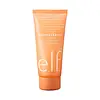What's inside
What's inside
 Key Ingredients
Key Ingredients

No key ingredients
 Benefits
Benefits

 Concerns
Concerns

 Ingredients Side-by-side
Ingredients Side-by-side

Water
Skin ConditioningDecyl Glucoside
CleansingLauryl Glucoside
CleansingCocamidopropyl Betaine
CleansingSodium Lauroyl Sarcosinate
CleansingGlycereth-7
HumectantPEG-120 Methyl Glucose Dioleate
EmulsifyingNiacinamide
SmoothingLavandula Angustifolia Oil
MaskingXanthan Gum
EmulsifyingCocamide Mea
EmulsifyingGlycol Stearate
EmollientDMDM Hydantoin
PreservativeDisodium EDTA
Citric Acid
BufferingButylene Glycol
HumectantIodopropynyl Butylcarbamate
PreservativeWater, Decyl Glucoside, Lauryl Glucoside, Cocamidopropyl Betaine, Sodium Lauroyl Sarcosinate, Glycereth-7, PEG-120 Methyl Glucose Dioleate, Niacinamide, Lavandula Angustifolia Oil, Xanthan Gum, Cocamide Mea, Glycol Stearate, DMDM Hydantoin, Disodium EDTA, Citric Acid, Butylene Glycol, Iodopropynyl Butylcarbamate
Water
Skin ConditioningCocamidopropyl Betaine
CleansingGlycerin
HumectantDecyl Glucoside
CleansingLauryl Glucoside
CleansingXanthan Gum
EmulsifyingGlycyrrhiza Glabra Root Extract
BleachingFomes Officinalis Extract
Skin ProtectingCamellia Oleifera Leaf Extract
AstringentPanthenol
Skin ConditioningDisodium EDTA
Hamamelis Virginiana Water
AstringentCitric Acid
BufferingAlcohol
AntimicrobialButylene Glycol
HumectantPotassium Sorbate
PreservativePhenoxyethanol
PreservativeEthylhexylglycerin
Skin ConditioningWater, Cocamidopropyl Betaine, Glycerin, Decyl Glucoside, Lauryl Glucoside, Xanthan Gum, Glycyrrhiza Glabra Root Extract, Fomes Officinalis Extract, Camellia Oleifera Leaf Extract, Panthenol, Disodium EDTA, Hamamelis Virginiana Water, Citric Acid, Alcohol, Butylene Glycol, Potassium Sorbate, Phenoxyethanol, Ethylhexylglycerin
Ingredients Explained
These ingredients are found in both products.
Ingredients higher up in an ingredient list are typically present in a larger amount.
Butylene Glycol (or BG) is used within cosmetic products for a few different reasons:
Overall, Butylene Glycol is a safe and well-rounded ingredient that works well with other ingredients.
Though this ingredient works well with most skin types, some people with sensitive skin may experience a reaction such as allergic rashes, closed comedones, or itchiness.
Learn more about Butylene GlycolCitric Acid is an alpha hydroxy acid (AHA) naturally found in citrus fruits like oranges, lemons, and limes.
Like other AHAs, citric acid can exfoliate skin by breaking down the bonds that hold dead skin cells together. This helps reveal smoother and brighter skin underneath.
However, this exfoliating effect only happens at high concentrations (20%) which can be hard to find in cosmetic products.
Due to this, citric acid is usually included in small amounts as a pH adjuster. This helps keep products slightly more acidic and compatible with skin's natural pH.
In skincare formulas, citric acid can:
While it can provide some skin benefits, research shows lactic acid and glycolic acid are generally more effective and less irritating exfoliants.
Most citric acid used in skincare today is made by fermenting sugars (usually from molasses). This synthetic version is identical to the natural citrus form but easier to stabilize and use in formulations.
Read more about some other popular AHA's here:
Learn more about Citric AcidCocamidopropyl Betaine is a fatty acid created by mixing similar compounds in coconut oil and dimethylaminopropylamine, a compound with two amino groups.
This ingredient is a surfactant and cleanser. It helps gather the dirt, pollutants, and other impurities in your skin to be washed away. It also helps thicken a product and make the texture more creamy.
Being created from coconut oil means Cocamidopropyl Betaine is hydrating for the skin.
While Cocamidopropyl Betaine was believed to be an allergen, a study from 2012 disproved this. It found two compounds in unpure Cocamidopropyl Betaine to be the irritants: aminoamide and 3-dimethylaminopropylamine. High-grade and pure Cocamidopropyl Betaine did not induce allergic reactions during this study.
Learn more about Cocamidopropyl BetaineDecyl Glucoside is a glucose-based surfactant and emulsion stabilizer. It is created by reacting glucose with the fatty acids from plants.
Surfactants help clean the skin by trapping oil, sebum, and dirt to be washed away. As an emulsion stabilizer, it stabilizes the ingredients in a product by preventing them from separating.
This ingredient is biodegradable and non-toxic. This ingredient is commonly found in baby shampoos.
Decyl Glucoside is sometimes used to stabilize the UV filter Tinosorb.
Learn more about Decyl GlucosideDisodium EDTA plays a role in making products more stable by aiding other preservatives.
It is a chelating agent, meaning it neutralizes metal ions that may be found in a product.
Disodium EDTA is a salt of edetic acid and is found to be safe in cosmetic ingredients.
Learn more about Disodium EDTALauryl Glucoside sugar- and lipid-based cleansing agent. It is created from glucose and lauryl alcohol.
This ingredient is a surfactant, making it easier to rinse oil, dirt, and other pollutants away.
A British study found lauryl glucoside to cause skin sensitivity for some people. We recommend speaking with a professional if you have concerns.
Other names for this ingredient include "Lauryl Polyglucose", "Lauryl glycoside", and "D-Glucopyranoside".
Learn more about Lauryl GlucosideWater. It's the most common cosmetic ingredient of all. You'll usually see it at the top of ingredient lists, meaning that it makes up the largest part of the product.
So why is it so popular? Water most often acts as a solvent - this means that it helps dissolve other ingredients into the formulation.
You'll also recognize water as that liquid we all need to stay alive. If you see this, drink a glass of water. Stay hydrated!
Learn more about WaterXanthan gum is used as a stabilizer and thickener within cosmetic products. It helps give products a sticky, thick feeling - preventing them from being too runny.
On the technical side of things, xanthan gum is a polysaccharide - a combination consisting of multiple sugar molecules bonded together.
Xanthan gum is a pretty common and great ingredient. It is a natural, non-toxic, non-irritating ingredient that is also commonly used in food products.
Learn more about Xanthan Gum